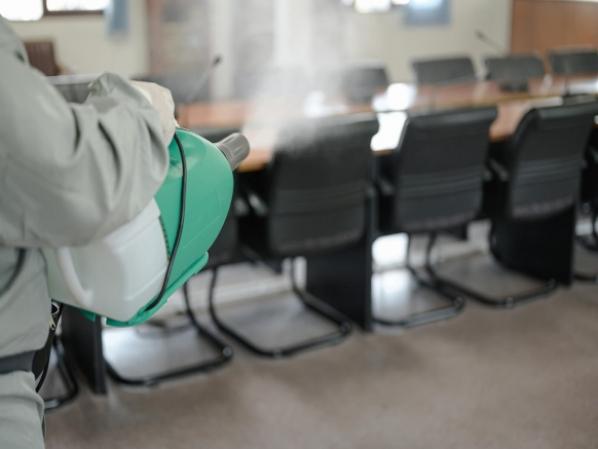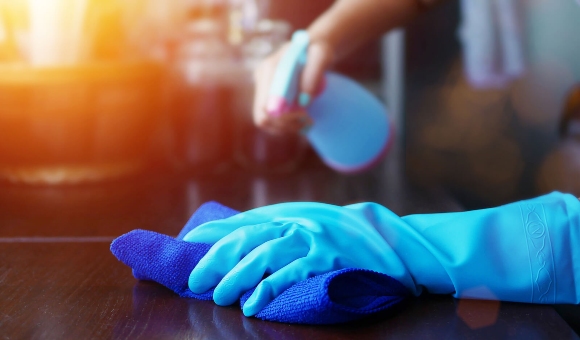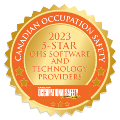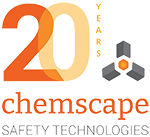The Difference between Cleaning, Sanitizing & Disinfecting
October 20, 2020

What is the difference between cleaning, sanitizing, and disinfecting?
Cleaning, sanitizing, and disinfecting are routine tasks these days; part of a collective strategy to prevent the spread of infectious diseases like COVID-19. With so much cleaning, sanitizing, and disinfecting going on it's important to ask: what is the difference between these 3 activities and are there any health risks with these chemical products?
What is the purpose of cleaning?
The main purpose of cleaning is to remove germs, dirt, dust, and organic material by physically removing them from surfaces or objects. Cleaning is done with water, maybe a cleaning product, and the physical act of scrubbing. Cleaning does not kill bacteria, viruses, or fungi, which we sometimes refer to as “germs”.
Cleaning alone has been shown to remove up to 98% of bacteria and 93% of viruses from surfaces using microfiber and water in tests published by the EPA. Cleaning also disturbs the environment that allows germs to survive and reproduce. Cleaning removes dust, molds, irritants, and allergens that can trigger asthma symptoms.
What is the purpose of sanitizing?
The purpose of sanitizing is to decrease the presence of germs on surfaces or objects to a level deemed safe by public health officials. However, sanitizing does not eliminate all of the germs and bacteria from an object or surface. Instead, sanitizing aims to improve workplace hygiene without compromising the health and safety of workers since less harsh chemicals are typically used.
What is the difference between sanitizing and disinfecting?
Sanitizing and disinfecting is done with the help of chemicals and/or sometimes heat to kill germs. Disinfectants are more effective at killing germs than sanitizers and both are specific to the germs they kill. Some disinfectants work better when the dirt and organic material have been removed first. Sometimes a cleaning product is used first and then a surface is sanitized or disinfected.
Sanitization
Sanitizing is done with the use of a chemical product or device (like a dishwasher) that reduces the number of germs on surfaces or objects to a level considered safe by public health standards or requirements. Sanitizing kills most germs and bacteria but not all of them and it does not remove dirt. Sanitizers are most often used in food service settings. Think of a hand sanitizer; washing your hands is the preferred first step; use sanitizer when washing facilities are unavailable. A sanitizer or disinfectant can also be a water-based device, for example, those that use steam.
Disinfection
Disinfecting chemicals kill 99.999% of germs on hard, non-porous surfaces or objects. It is much less effective on other surfaces. Disinfectants are antimicrobial pesticides and must be registered with the U.S. EPA and the California Department of Pesticide Regulation (DPR) or similar agencies in other states. Disinfecting does not clean dirty surfaces or remove germs. It kills germs on contact (usually requires a certain amount of disinfectant on the surface for a certain length of time). The overuse and misuse of these products is a growing public health and environmental concern. Studies have found that the use of some disinfectant products is creating microbes that can mutate into forms that are resistant to disinfectants or that become superbugs (germs resistant to antibiotics). Also, some of these chemical hazards can accumulate in our environment and contaminate our drinking water.
Regulations for Cleaners, Sanitizers and Disinfectants
Cleaners, sanitizers, and disinfectants are regulated in Canada by Health Canada Pest Management Regulatory Agency (PMRA) or the Natural and Non-prescription Health Products Directorate (NNHPD), formerly Natural Health Products Directorate (NHPD) and many are considered consumer products. They may not be controlled as per GHS classification. In the USA sanitizers and disinfectants are regulated by the state Department of Pesticide Regulation and the U.S. Environmental Protection Agency (EPA). The U.S. Food and Drug Administration (FDA) regulates sanitizers used on food contact surfaces.
The role of pesticides
We think of pesticides when we think of getting rid of ants or cockroaches, but germs are also pests and the products used to kill them are considered pesticides. The chemicals can also be called antimicrobial pesticides.
Match the product with the task and surface you need to clean
When choosing a cleaning or antimicrobial product, you will need to understand the objective of the task and the type of surface that needs to be cleaned, sanitized, or disinfected. Does the surface need to be just cleaned or does it need to be disinfected too? Usually, you need to clean a surface before you disinfect it.
How to properly clean and disinfect surfaces
Properly cleaning and disinfecting a surface requires the following steps:
-
Remove visible dirt to clean.
-
Choose a product with disinfecting qualities.
-
Ensure a correct concentration of product is used.
-
Use an appropriate amount of product to disinfect.
-
Keep the product on the surface for the recommended time.
How to safely clean and disinfect worksites
It’s important to keep employees safe when using cleaning, disinfectant, or sanitization products. The following safety measures should be taken to protect workers from harm:
- Proper Storage: Ensure that cleaning and disinfecting products are stored in their original containers. Always adhere to the instructions and heed the warnings provided on the label.
- Avoid Mixing: Do not mix different cleaners and disinfectants unless the labels explicitly indicate it is safe to do so. Certain combinations can result in severe injury or fatal consequences.
- Protective Gear: Refer to the label to determine whether gloves and/or eye protection are necessary to safeguard your hands and eyes while using the products.
- In Case of Contact: If accidentally swallowed, inhaled, or if the products come into contact with your skin, promptly follow the instructions on the label or seek medical assistance as necessary.
How to choose the right cleaning, disinfectant or sanitization product
When deciding on what products to use on an object or surface, there are several factors to consider:
Is the surface porous or non-porous?
Manufacturers design their products to match the surface they are meant to be used on and what the surface is used for. Different types of surfaces require different types of products and methods for removing or killing germs. Hard, non-porous surfaces are easiest to clean. Soft, porous surfaces are often disposed of when grossly contaminated.
Is the surface touched by many people?
High touch surfaces may come into contact with broken skin or mucous membranes it needs disinfection. If a surface may be contaminated with germs but no one touches it, it likely doesn’t require disinfection. Chemical use may be avoided.
Do you need to sanitize or disinfect?
A surface may just need to be sanitized which removes germs up to 99.9%. Disinfection kills virtually everything on the surface.
Incorrectly using a disinfectant may kill the weaker germs, but the more resistant germs survive. There are risks to overusing disinfectants as germs can become resistant by overuse.
Remember, many infectious diseases are spread in the air. Disinfecting surfaces will not prevent the spread of these diseases! The only way to prevent the spread of airborne diseases is by our behaviors (i.e. staying home when sick, covering your cough or sneeze, wearing a mask).



